High-quality landscape tripods to frame shot with better precision.
Professional shooters and newbies alike can benefit from using a tripod for landscape photography if they want to take clear photos at a higher shutter speed. The price for basic landscape tripods typically ranges between $20 and $50.
If you take a closer look at budget tripods, you might notice that they are often made of materials that typically don’t last long. Besides, they don’t allow you to stabilize your camera properly and are prone to breaking.
If you really want to get a decent tripod for taking landscape photos, make sure to read our list. We have rounded up the best options on the market to help you select the most suitable option for your budget and needs.
Tripods for heavy lenses will come in handy to those who work in windy weather. They are more stable than tripods that don’t weigh a lot.
However, if you want to go on a long hiking trip, a heavy tripod might be less useful. Besides, it might be difficult to fit it in your backpack.
There is no all-in-one solution for all photographers. Besides, you might need to buy several tripods and use the one that is perfect for a specific shooting situation.
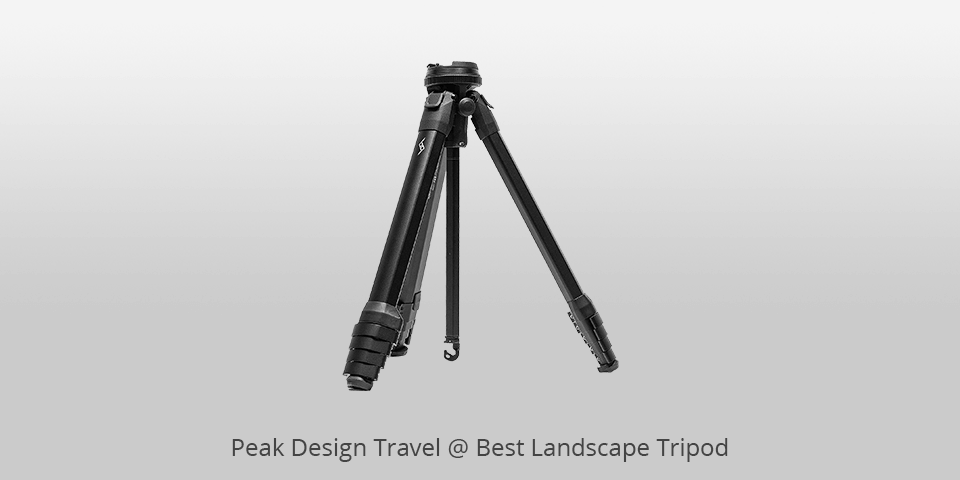
Head Type: Ball Heads | Max Height: 60 inches | Weight Capacity: 20lbs
This landscape tripod was released by Peak Design back in 2019. It quickly became one of the most popular options on the market.
Landscape photographers use this tripod for DSLR because it is extremely portable and lightweight, which makes it suitable for a variety of purposes.
When I decided to give this tripod a try, I took it to different locations. I used it in the mountains in the southwest and less-traveled hiking locations in the north.
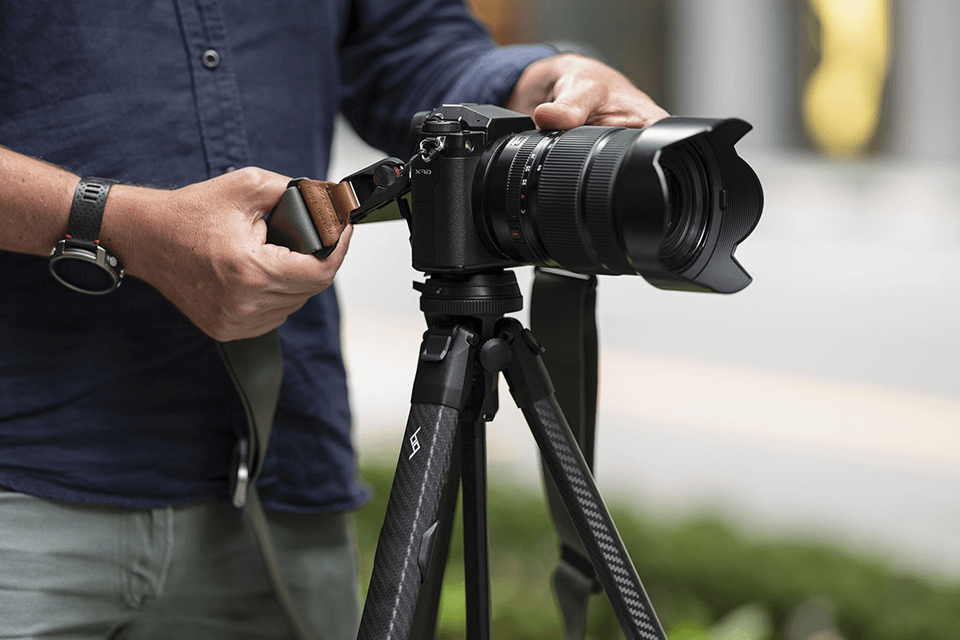
As the result, I believe that no other model can compare to this tripod. It is extremely small when collapsed. In addition, it doesn’t weigh much, which makes it a smart choice for landscape photographers who are looking for a high-quality model.
This model is fitted with a flexible ball head. Its legs are quite stable. When you extend its center column, you will see that it is almost as tall as the other models listed below.
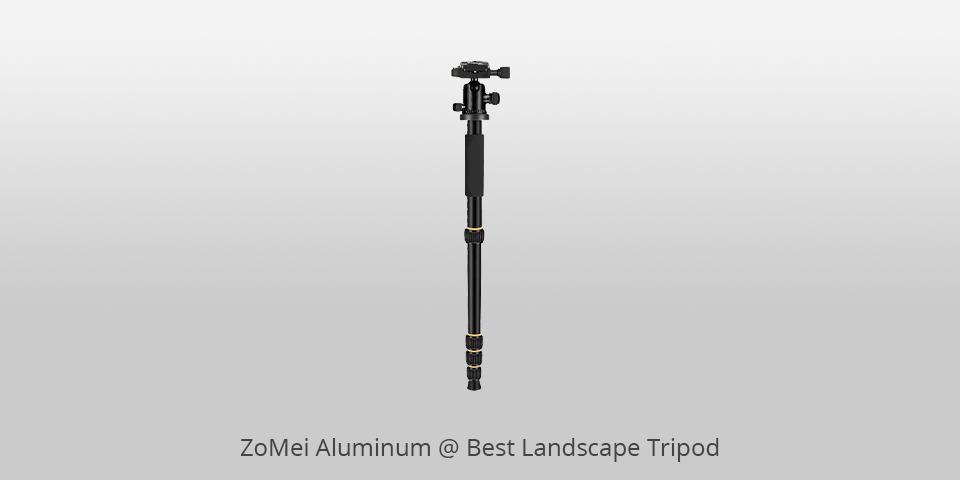
Head Type: Ball Fluid | Max Height: 62 inches | Weight Capacity: 11lbs
ZoMei is a fantastic tripod for landscape if your priorities are budget-friendliness and portability. With a price tag of below $70, you’ll be hard-pressed to find a cheaper option with the same level of quality.
The materials used for the tripod are quite durable, as it is made of aluminium alloy and ABS plastic.
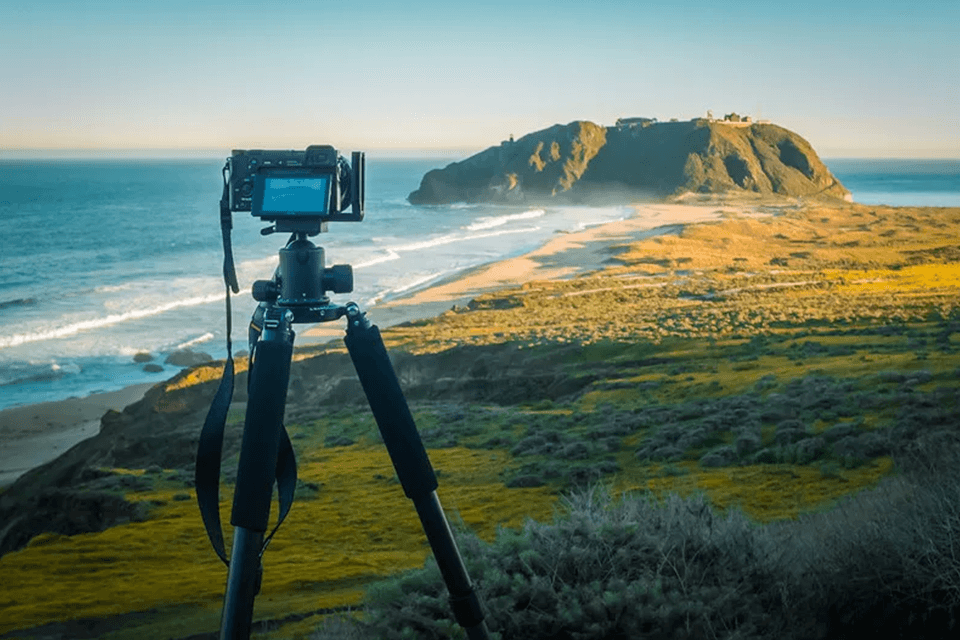
The max height of the ZoMei is 62 inches, which is solid but not as impressive as other options since you won’t be able to enjoy eye-level landscape photography shooting.
A great feature of this tripod is the individually adjustable leg height. It enables you to set it up perfectly on uneven terrain, which can be quite a problem for photographers who do a lot of hiking.
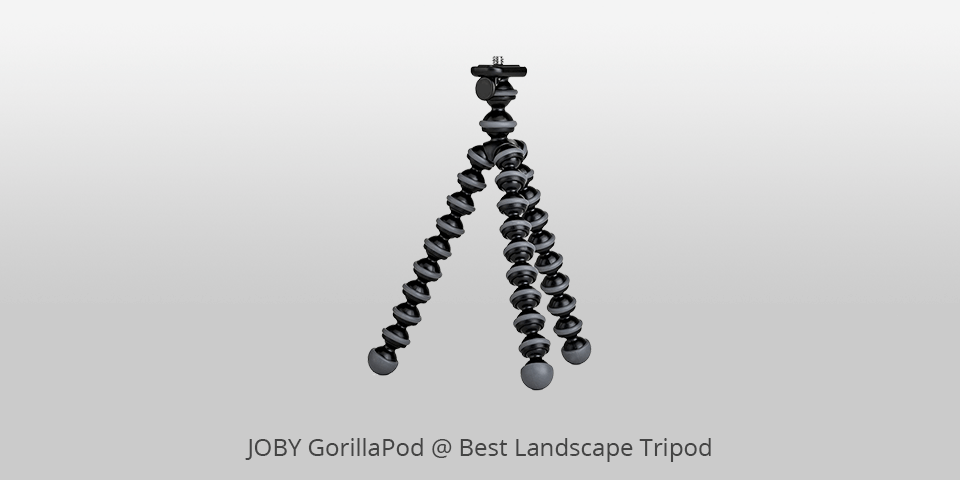
Head Type: Ball | Max Height: 6.4” | Weight Capacity: 0.7lbs
This model is a part of a series of flexible tripods, which makes it different from other models you can see on the market. Its legs have flexible ball joints connected to each other, which makes it easier to adjust the length.
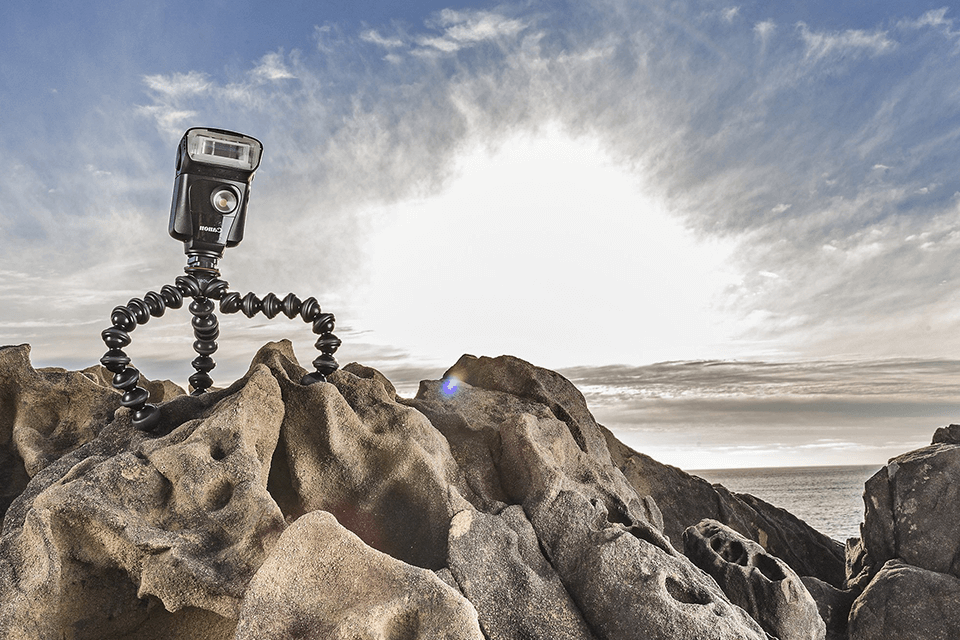
You can move every joint to stabilize your tripod even better. This tripod is perfect for those who want to take photos from extreme angles.
Thanks to its flexible wrapped legs, you can use this tripod for landscape photography on different surfaces and experiment with unusual angles to capture your best shots.
When folded, the tripod will easily fit into your backpack. Due to its small weight, you can take it with you wherever you go.
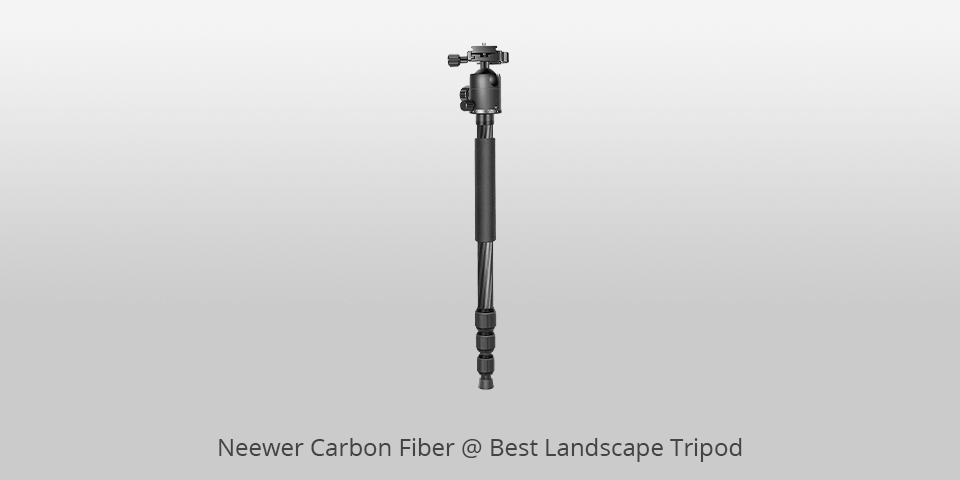
Head Type: Ball Fluid | Max Height: 66 inches | Weight Capacity: 26lbs
This 66” model from a popular tripod brand comes with a lot of handy features. While you won’t be able to set up the tripod as quickly due to the lack of buckle locks, you get to enjoy high-density carbon fiber columns enhanced with high-temperature curing and a strengthened polymeric build.
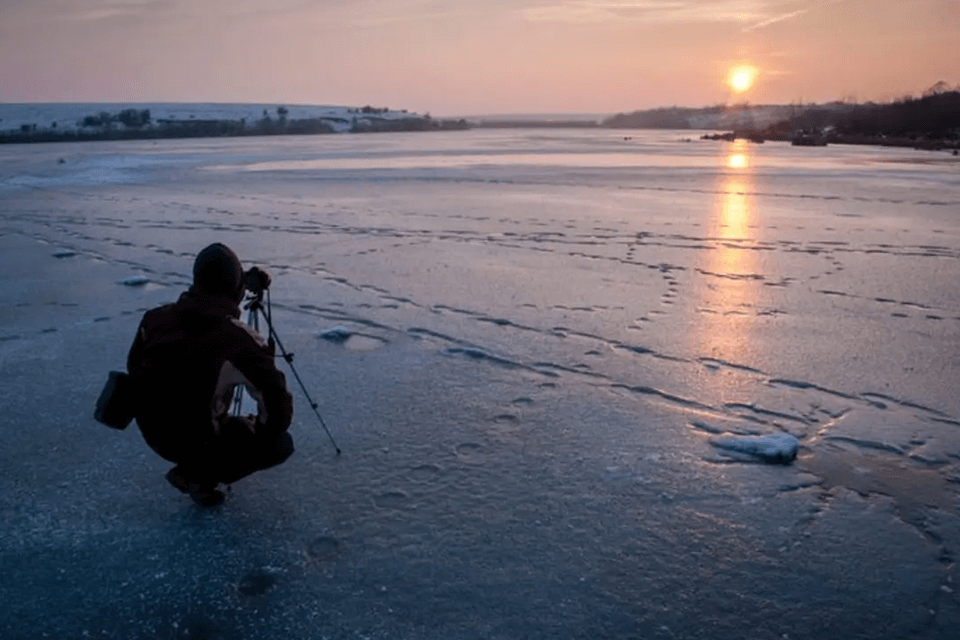
Such durability lets you enjoy a far larger load capacity compared to other tripods.
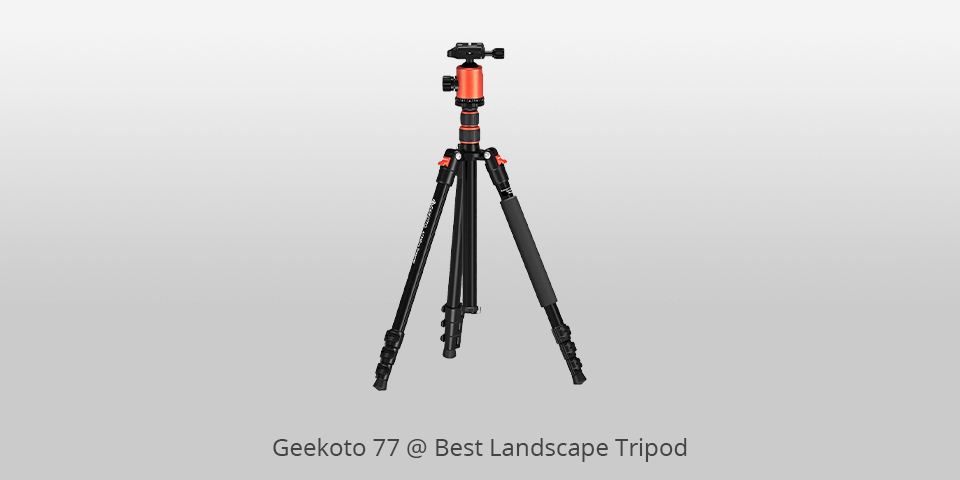
Head Type: Ball Fluid | Max Height: 85 inches | Weight Capacity: 33lbs
This sturdy tripod for nature photography is made of carbon fiber. It comes with four-part column stands with a twist-lock mechanism and lets you set the camera height between 27 and 85 inches in a matter of seconds.
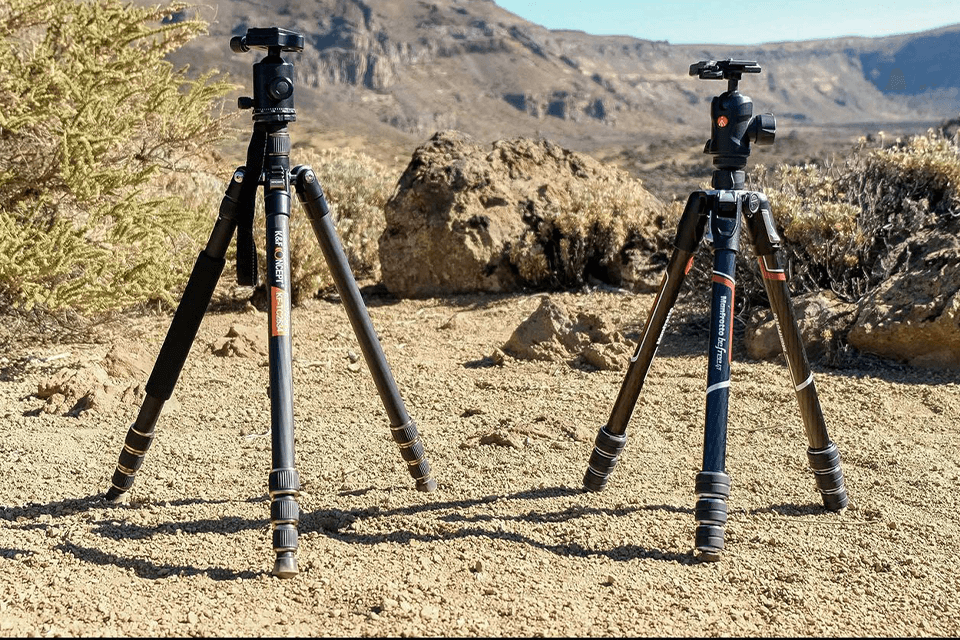
Meanwhile, the three-position stand adjustment mechanism gives you more flexibility when you need to choose the angle for your next photo. Equipped with 1.25” tubes, the Geekoto can hold cameras for landscape photography up to 33 pounds big, which is all the stability you might need when shooting outdoors.
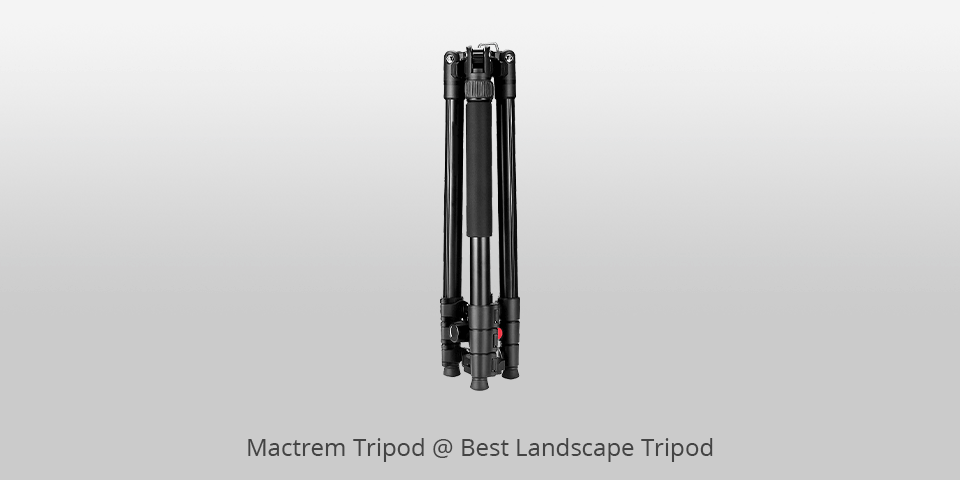
Head Type: Ball Fluid | Max Height: 62.5 inches | Weight Capacity: 33lbs
If you value both portability and stability, then this might be the best tripod for landscape photography for you. Made of relatively lightweight aluminum alloy, it’s capable of supporting cameras with heavy lenses for landscape photography that weigh up to 33 lbs.
The ball head is also pleasantly flexible and can be easily adjusted by employing the 3 locking knobs.
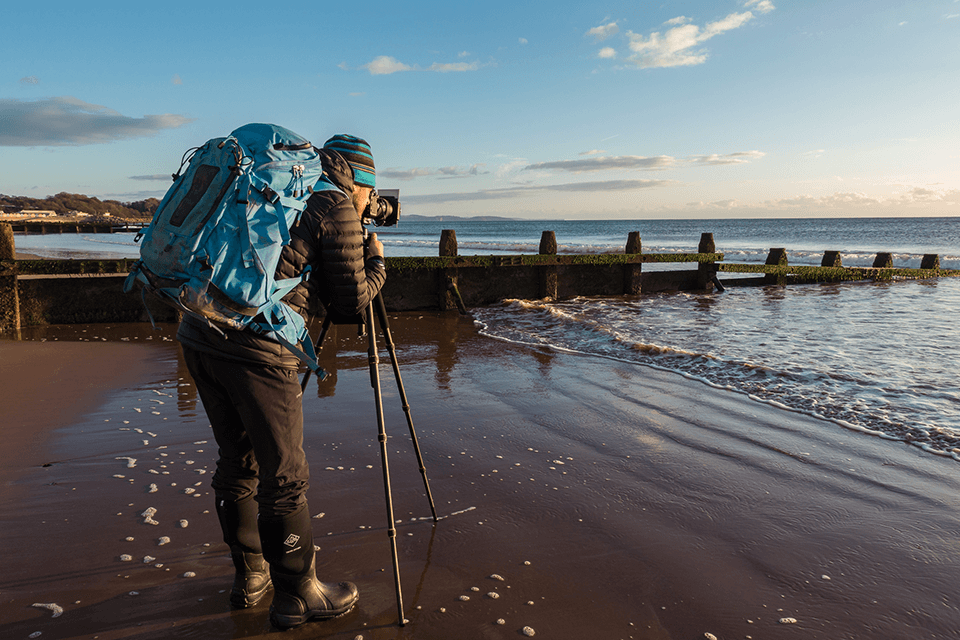
The ability to set the camera sideways adds another level of freedom that can’t be found in most other tripods. You can fold the Mactrem easily using the provided quick-release locks and store it in your bag while you’re moving from place to place.
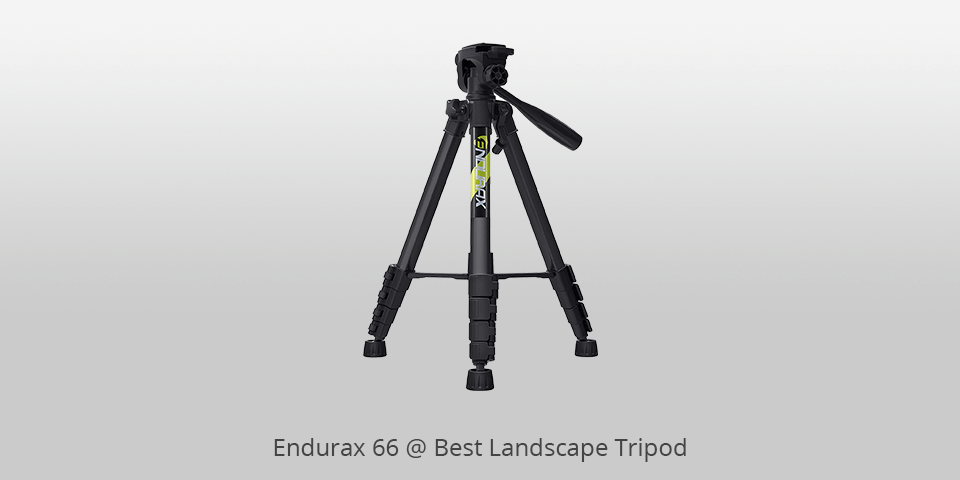
Head Type: Ball Fluid | Max Height: 78 inches | Weight Capacity: 17.6lbs
This tripod for nature photography can be as small as 22.5 inches when folded, and its max height reaches 78 inches. The Endurax offers a 4-part stand design with flip-lock knobs that make it easy to adjust and carry the tripod.
The ¼” quick-release plates support Canon, Nikon, and Sony cameras among many others.
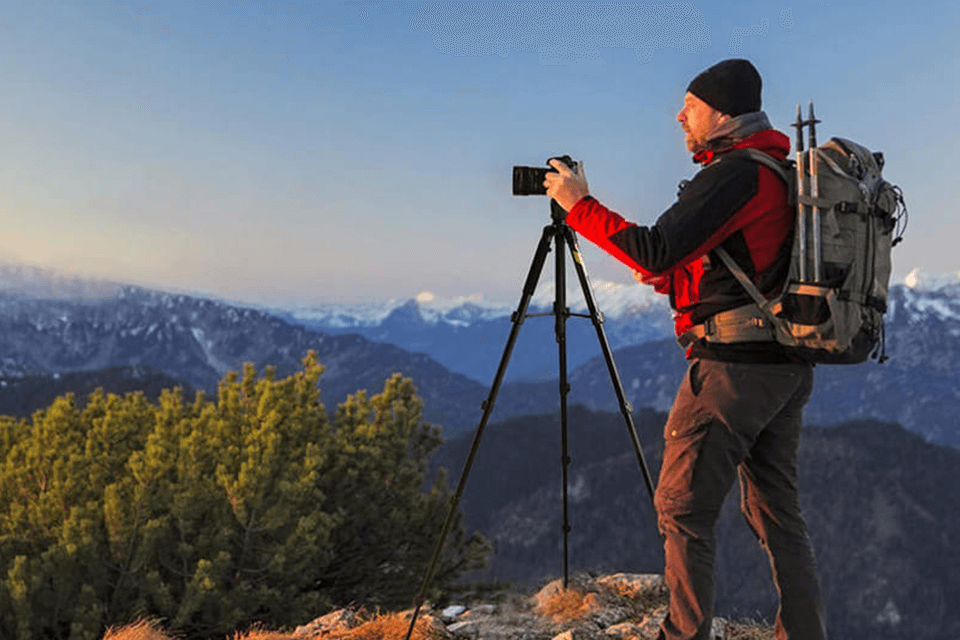
The ball head supports 360-degree rotation, and the 3 control knobs allow you to enjoy panoramic views. Later, you can combine such images into a single breathtaking photo in panorama software. The provided bubble level is useful for quickly finding the rack balance and taking photos with maximum accuracy and from the perfect perspective.
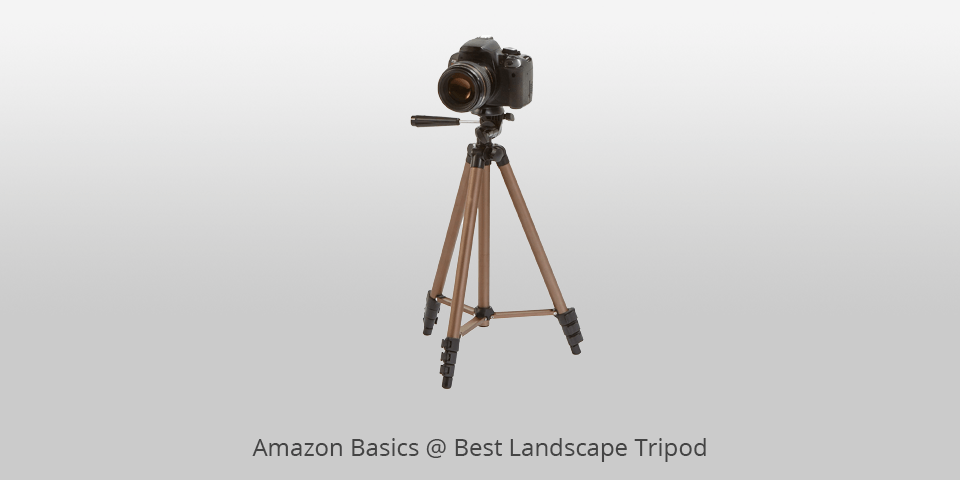
Head Type: 3-Way | Max Height: 50” | Weight Capacity: 4.4lbs
The Amazon Basics 50-inch Tripod is a decent option for landscape shots, especially for those on a budget. The tripod features a quick-release mount plate, which allows for easy and quick camera switching. This can be a time-saver when you need to capture shots from different angles or with different cameras.
Additionally, it has a three-way head that can swivel and tilt, enabling you to find the perfect angle for your landscape shots.
Another positive aspect is its compact size and portability. This tripod for landscape photography folds down to a compact size, making it easy to store and carry around. This is particularly convenient for landscape photographers who often need to travel to different locations to capture their shots. It also has flip-lock knobs for easy adjustments, allowing you to set it up quickly and efficiently.
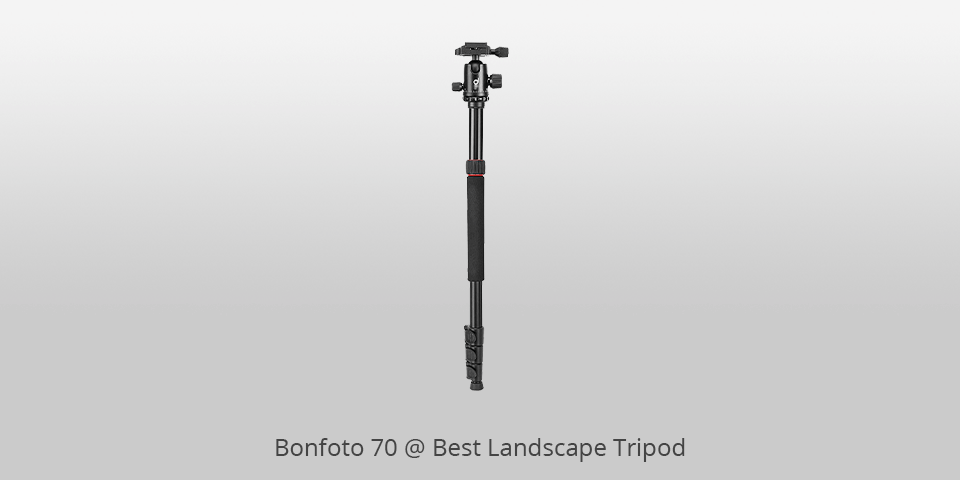
Head Type: Ball Fluid | Max Height: 56 inches | Weight Capacity: 26.5lbs
This candidate for the title of the best tripod for landscape photography sports a bronze and grey design while being offered at a moderately high price. Made of aluminum alloy, it can be considered a lightweight model with a weight of a mere 3.5 lbs.
If you plan to do a lot of hiking, this might be a great choice.
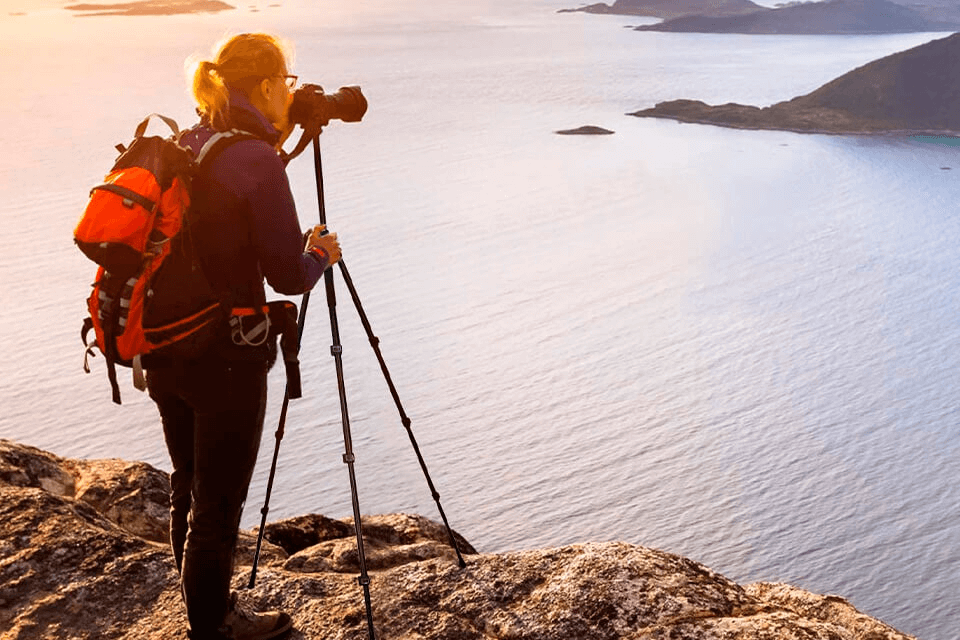
Even though it has a light build, it can sustain up to 26.5 pounds. This travel tripod has a ball head suitable for mounting DSLRs. It is rather fragile though, so treat it with care.
Thanks to 360° horizontal rotation functionality, you can take photos from any angle.
| IMAGE | NAME | FEATURES | |
|---|---|---|---|

|
Peak Design Travel
OUR CHOICE
|
CHECK PRICE → | |

|
ZoMei Aluminum
DURABLE
|
CHECK PRICE → | |

|
JOBY GorillaPod
FLEXIBLE
|
CHECK PRICE → |
You need to consider its price, build quality, weight, and other parameters, including flexibility.
Height. Modern tripods feature three adjustable legs that can be extended 50–63 inches (126–160cm). The length of a tripod for landscape photography isn’t a huge point of discussion, but it can still play a large role in your photoshoots.
Having a tall tripod isn’t usually necessary, but on some occasions, you'll find yourself in a situation where it can become a lifesaver.
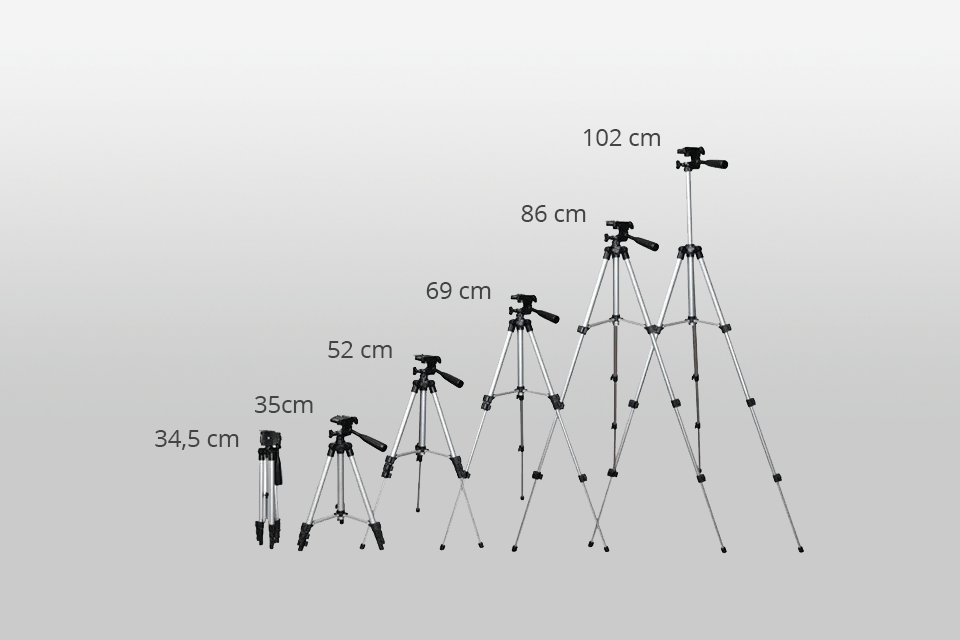
Such scenarios usually demand you place the camera extra high to capture the scene you envisioned or unlock the stands and place them far apart to achieve the desired perspective.
Weight. Most tripods don’t weigh more than 9 lbs. The weight of over 65% of modern tripods doesn’t exceed 5 pounds. Even a lightweight landscape tripod can offer the sturdiness necessary to withstand windy shooting conditions.
However, such models do come at a higher price and are mostly aimed at professionals or enthusiasts who aren’t afraid of making huge investments in their gear.
For instance, carbon fiber tripods are more lightweight than aluminum ones, while offering the same level of sturdiness. Sadly, the price increase is quite substantial, so if you’re still new to photography, it might be too soon to purchase a premium carbon model.
Legs expansion. This aspect might seem irrelevant for some, but you still have to choose between tripods that allow you to expand the stands by unscrewing the connections and others that rely on clip locks.
Which system should you pick? The answer depends on your preferences. Many photographers who specialize in nature photography prefer clips since they can be opened and closed much faster.
You’ll especially appreciate that speed if you ever go on a photo shoot on a cold winter morning. Clips do have a weakness though in the fact that after a while the connection points become stiffy, which makes opening and closing the legs more difficult. They can accidentally become loose, and you’ll have to regularly tighten the clips with an Allen key.
Material. Tripods are commonly made of aluminum or carbon fiber. Aluminum models are generally less expensive and heavier, while carbon fiber tripods are more expensive but lighter and more durable. Choose according to your budget and preferences.
Weather Resistance. If you plan to shoot in harsh weather conditions, consider a tripod with weather-resistant materials to protect it from damage.
The primary reason why photographers use a tripod for taking landscape photos is to guarantee that there is zero camera movement or vibrations during exposure so that all images end up looking sharp and clear. The second reason why getting a tripod is a good idea is that it will allow you to implement your creative photo ideas.
The industry standard leg length falls into the 50-63” (126-160cm) range. You can also find lower or taller models, but they aren’t as common. If a landscape tripod comes with a center post that lets you place the camera higher, such height makes it possible to do worms eye view photography.
Some photographers use only tripods fitted with ball heads. However, there are plenty of professionals who use models with pan-and-tilt heads. I prefer using ball-head tripods as they are more convenient to use.